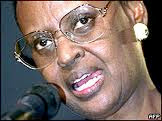 |
| Little woman |
Child marriage is a worldwide phenomenon but is most prevalent in Africa and Southern Asia and although its practice has decreased somewhat in recent decades, it remains common in, although not only confined to, rural areas and among the most poverty stricken.
In communities where child marriage is practiced marriage is regarded as a transaction, often representing a significant economic activity for a family. A daughter may be the only commodity a family has left to be traded and sometimes girls can be used as currency or to settle debts. A girl's marriage may also take place as a perceived means of creating stability. In uncertain times, poor harvest conditions or war, a family may believe it is necessary to ensure the economical 'safety' of their daughter and family, through marriage.
Dominant notions of morality and honor are important factors encouraging the practice of child marriage. These are influenced great by the importance placed on maintaining 'family honor' and the high value placed on a girl's virginity. It is considered that shame would be cast on a family if a girl were not a virgin when she marries. Therefore, in order to ensure that a girl's virtue remains in tact, girls may be married earlier, in order to ensure their virginity. Young girls may also be encouraged to marry older men, due to the perception that an older husband will be able to act, as a guardian against behavior deemed immoral and inappropriate.
 |
| Tender aged bride |
Consequences
Physical: - When a child bride is married she is likely to be forced into sexual activity with her husband, and at an age where the bride is not physically and sexually mature this has severe health consequences.
According to UNFPA (Child Marriage Factsheet, 2005), girls ages l0-14 are five times more likely to die in pregnancy or childbirth than women aged 20-24 and girls aged 15-19 are twice as likely to die. Young mothers face higher risks during pregnancies including complications such as heavy bleeding, obstructed labor, obstetric fistula, infection, anemia, and eclampsia which contribute to higher mortality rates of both mother and child. The age disparity between a child bride and her husband, in addition to her low economic autonomy, further increases a girl's vulnerability to HIV/AIDS.
Psychological and social: - Women who marry early are more likely to suffer abuse and violence, with inevitable psychological as well as physical consequences. The husband’s family as well as the husband himself sometimes perpetrates abuse, and girls that enter families as a bride often become domestic slaves for the in-laws.
Early marriage has also been linked to wife abandonment and increased levels of divorce or separation (UNICEF, Early Marriage: Child, Spouses, 2001) and child brides also face the risk of being widowed by their husbands who are often considerably older. In these instances the wife is likely to suffer additional discrimination as in many cultures divorced, abandoned or widowed women suffer a loss of status, and may be ostracized by society and denied property rights.
Developmental: - Child Marriage also has considerable implications for the social development of child brides, in terms of low levels of education, poor health and lack of agency and personal autonomy.
Large numbers of the girls who drop out of school do so because of early marriage, leaving many women who married early illiterate. Early marriage plans can also discourage a girl's parents from educating their daughter because they believe that a formal education will only benefit her future family in law.
The cyclical nature of early marriage results in a likely low level of education and life skills, increased vulnerability to abuse and poor health, and therefore acute poverty.
 |
| What is my destiny? |
Solutions/Recommendations
Education: - Improving access to education and eliminating gender gaps in education are therefore important strategies for ending the practice of child marriage. Repeated studies show:
1. Girls with a secondary education are up to six times less likely to marry young compared to girls with little or no education.
2. Education delays the age at which a woman marries.
3. Education provides an alternative opportunity for girls other than marriage.
4. Education increases socio-economic status and earning potential for girls.
Poverty Reduction: - The world's poorest countries have the highest rates of child marriage. Families often marry girls off to lessen their economic burden and provide a future for their daughters. Data verifies that:
1. Girls from poor families are about twice as likely to marry young than girls from better-off households.
2. Girls who earn a wage may be seen as an economic asset, not a burden, by their families.
3. Girls who earn a wage are less dependent on others to provide for them.
Engaging Men and Boys: - The involvement of men in supporting local women’s rights efforts has been repeatedly cited in research studies as a critical element of the formula for success in advancing women’s initiatives throughout the developing world.
Involving men in education efforts concerning forced marriage is particularly important for changing customary law.
Changing and Enforcing laws: - Changing the laws that govern women’s lives and enforcing them through well developed legal institutions will eliminate the horror of child marriage. In countries where there are statutory laws that protect women, mending gaps between legal institutions and enforcement of the law should be a priority.
Child marriage is a violation of human rights. Unfortunately very few women are aware that they have rights by the simple fact that they are human beings.
The video below is a true story about Aberash Bekele from Ethiopia. It is a narrative of a young Ethiopian girl who refused to get married. Aberash is paying a high price for the decision she made but her life changed the lives of Ethiopian women forever.






























